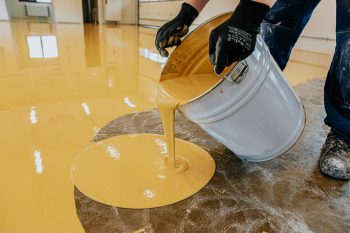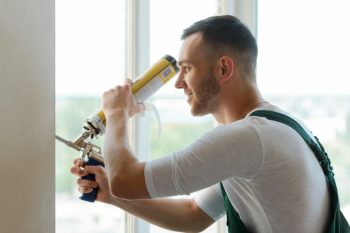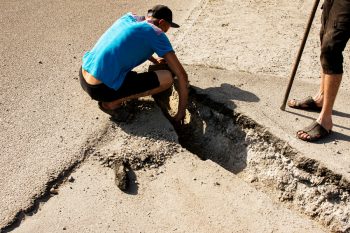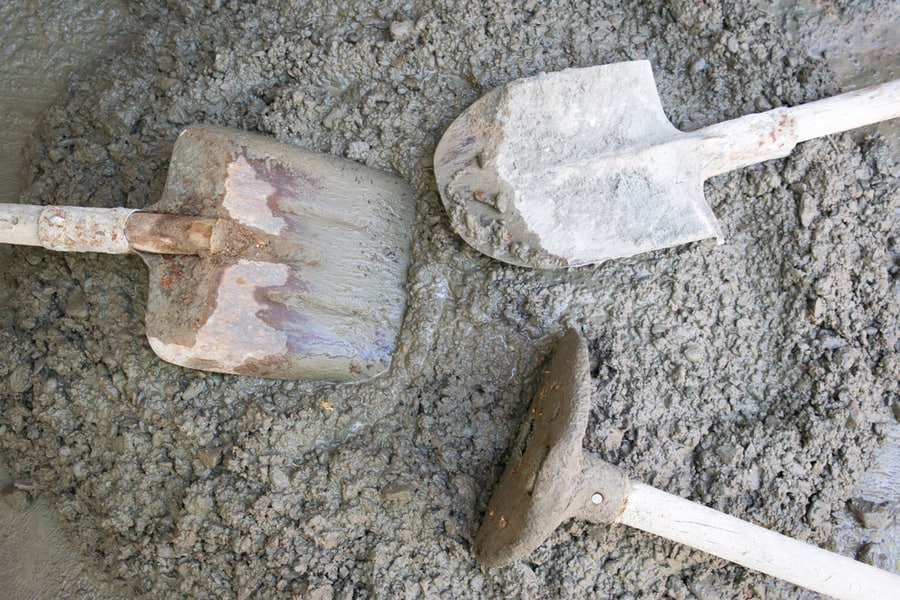
When doing concrete, it’s almost impossible to avoid it getting everywhere.
If concrete dries on tools and equipment before you remove it, it becomes very difficult to remove. However, it is not impossible.
There are many products on the market that remove concrete. Each will contain a strong acid such as:
- Sulphuric acid
- Hydrochloric acid
- Carbonic acid
- Nitric acid
If you are uncomfortable using acid, you may be able to use less aggressive methods, such as scraping on some surfaces.
I will discuss how to use concrete-dissolving products, what protective gear you need, and how to dispose of leftover products. Then, I will mention an alternative to acid that can sometimes work.
What Are Concrete Dissolvers?
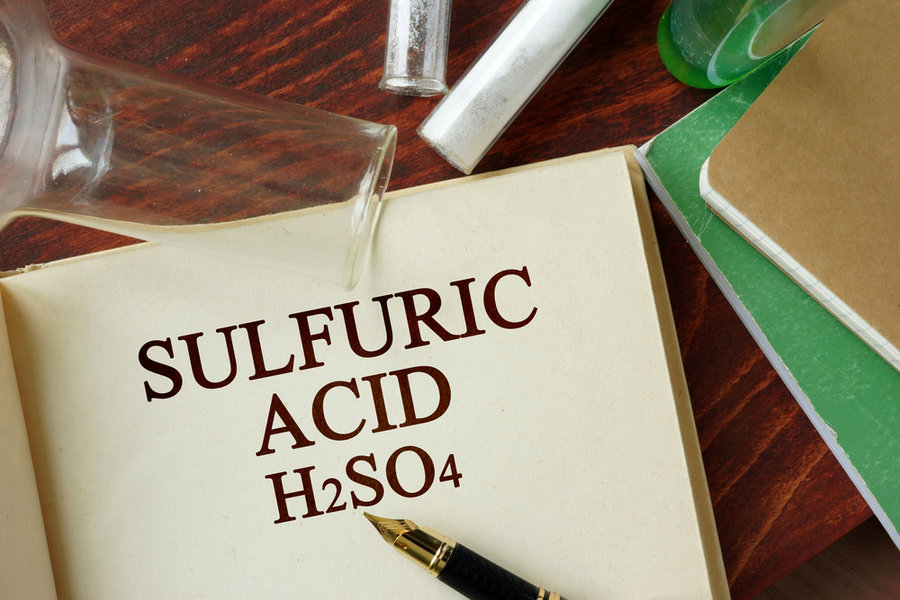
Products that dissolve concrete are made of powerful acids like Sulphuric acid, Hydrochloric acid, Carbonic acid, and Nitric acid.
These acids break down the concrete on the molecular level, rendering it paste-like and soft with enough exposure.
Safety

As these acids are so powerful, they are dangerous to handle.
Many of these acids produce caustic fumes, and all will burn your skin upon contact.
To safely use them, you need PPE and a well-ventilated area.
If you are splashed with acid at any time, neutralize it and immediately flush the area with water.
Protective Equipment for Acid

Standard PPE for handling these acids is:
- Chemical-resistant gloves (nitrile or neoprene are good choices).
- A full-face shield and safety goggles.
- Rubber boots.
- Long sleeves shirt and long pants (the goal is to expose as little skin as possible).
- If you are spraying a product, I highly advise a gas mask.
How To Dissolve Concrete With Acid

Concrete is very strong and requires a strong acid to dissolve it.
However, you must be careful using these products, as they can harm humans if handled improperly.
Supplies

- Chemical-resistant gloves.
- A face shield and safety goggles.
- Clothing that covers as much skin as possible.
- A concrete dissolver (can usually be purchased at your local hardware store).
- A five-gallon bucket of water.
- A neutralizer (again, depending on the product).
- Nylon brush.
Method

- The first thing you should do is open windows and doors so that you have sufficient ventilation.
- Next, put on your PPE and read the manufacturer’s instructions from beginning to end.
- If the manufacturer instructs you to dilute the product, fill a bucket with water to have on hand.
- If the product requires neutralization, ensure you have that before beginning.
- Prepare the product for application according to manufacturer instructions.
- Dip the brush into the product, and scrub it into the concrete.
- Continue adding additional products and scrubbing as needed until you have the desired result.
- Rinse everything that came into contact with the acid in the water, and let them air dry.
How To Dispose of Leftover Products
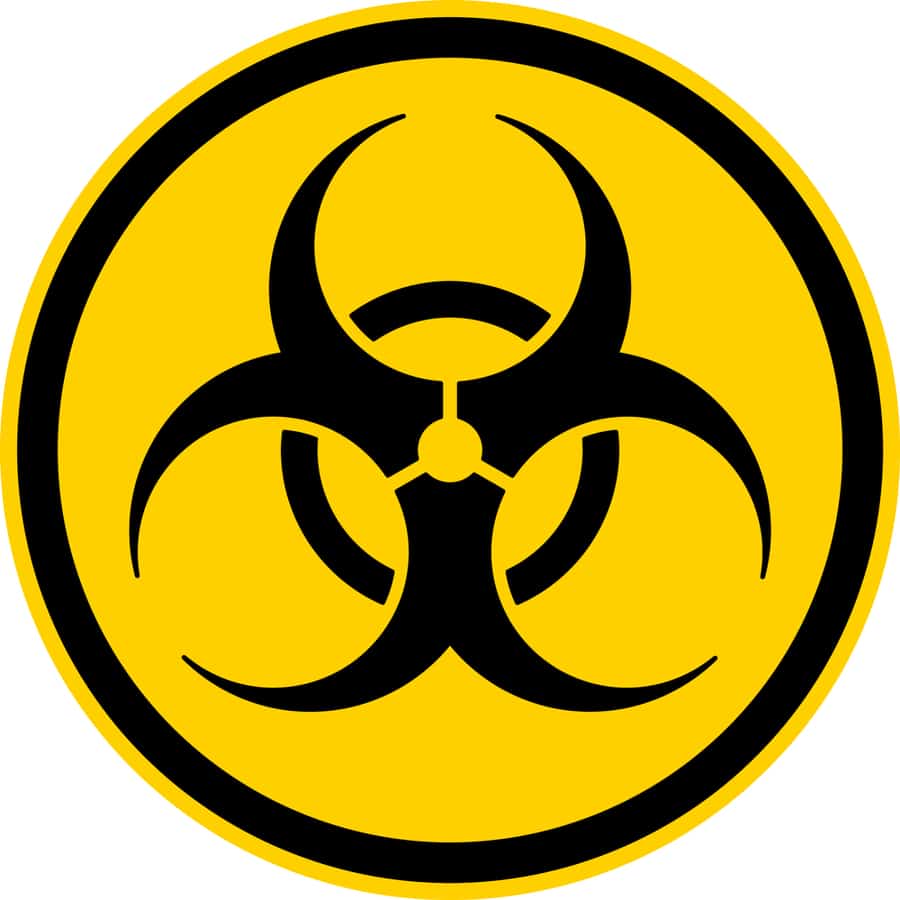
Once you are finished dissolving concrete, you might have some leftover products.
These products are often hazardous waste and cannot be dumped down the drain without neutralization.
To get the most detailed information on your product, search for the acid’s International Chemical Safety Card.
The ICI is an independent resource to get disposal, storage, and safety information on a chemical.
Supplies
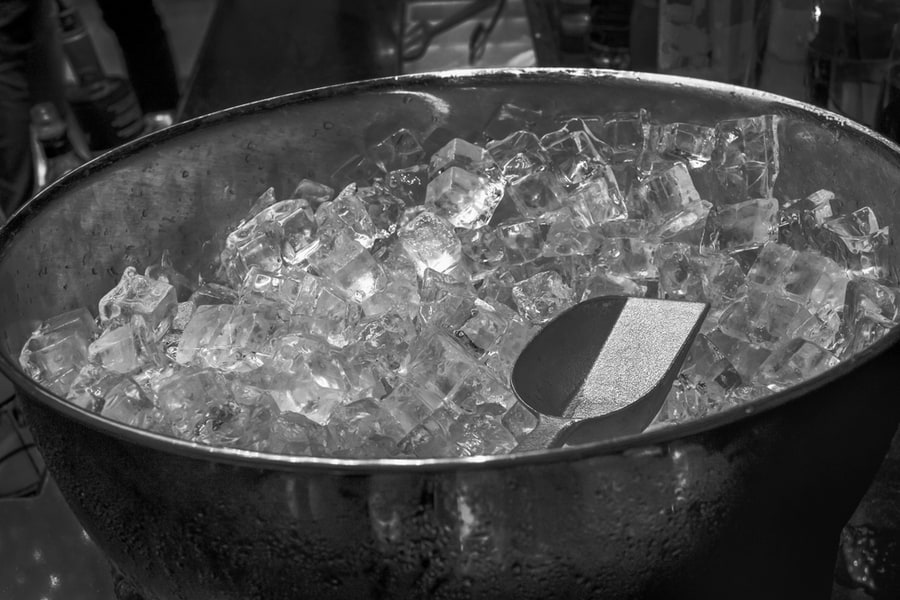
- A container that will not degrade when exposed to the acid.
- A bucket of ice that is large enough to fit the container.
- Water.
- Sodium hydroxide or magnesium hydroxide.
- Limitus strips (these can be bought in places that sell pool supplies and measure pH).
- PPE (see the section about safety).
Steps

- Place the container into the ice bucket, and allow it to chill for 15 minutes.
- Put on your PPE.
- Carefully pour the leftover product into the container.
- Add water to the container to begin neutralizing it.
- Test it with a Limitus strip – if the pH is between 6 and 8, you can skip to the final step.
- Add a base (such as Sodium hydroxide or Magnesium hydroxide) slowly to the container and continue checking the pH.
- Once the pH reaches between 6 and 8, you can safely pour it down the sink.
Scraping: An Alternative to Acid

In some cases, dissolving the concrete is not the best choice. Using acid has risks, and disposing of leftover material can be difficult.
If you are trying to remove concrete from a non-porous surface such as steel or glass, you can try scraping it off instead.
- Soak the surface in soapy water for 1 hour to lubricate it.
- Use a straight putty knife or scraper to carefully pry off the concrete.
- If necessary, use Goo Gone to remove leftover residue.
Takeaway
To dissolve concrete, you need a powerful acid. These acids have safety risks and should be cautiously handled while wearing PPE.
Once you finish your acid-based product, you will likely need to dilute it before pouring it down the drain.
In some cases, such as with glass and steel, you can avoid acid altogether by scraping the concrete off instead.
Frequently Asked Questions
What Is Muriatic Acid?
Muriatic acid is a diluted form of hydrochloric acid and should be treated as such. This powerful acid can burn your throat and eyes from breathing in the fumes.
It would be best to never work with muriatic acid in an enclosed space or allow it to touch your skin.
How Do You Remove Wet Concrete?
To remove wet concrete, you can use water and a scraper.
Scrape the majority of the concrete off, and a focused spray of water to remove small chunks.
If you still have residue, use Goo Gone or WD-40.
